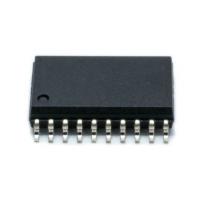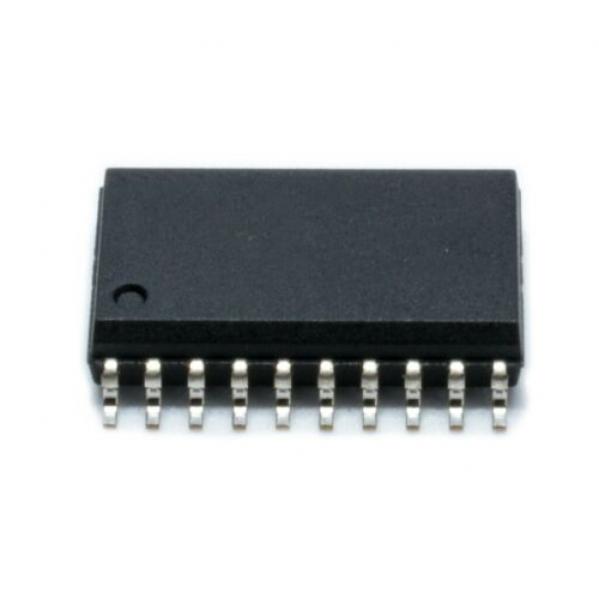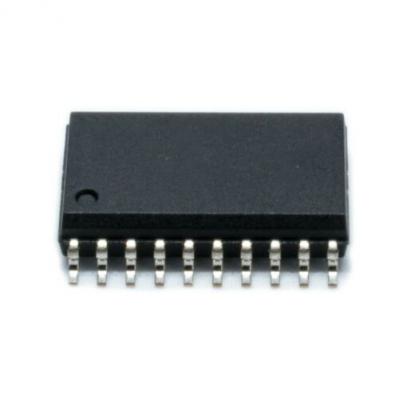SN74ACT573DW - [ SN74ACT573DW (B4) ]

Digital IC Shop
SN74ACT573DW - [ SN74ACT573DW (B4) ]
300Ft
OCTAL D-TYPE TRANSPARENT LATCHES
WITH 3-STATE OUTPUTS
These 8-bit latches feature 3-state outputs
designed specifically for driving highly capacitive
or relatively low-impedance loads. The devices
are particularly suitable for implementing buffer
registers, I/O ports, bidirectional bus drivers, and
working registers.
The eight latches are D-type transparent latches.
When the latch-enable (LE) input is high, the Q
outputs follow the data (D) inputs. When LE is
taken low, the Q outputs are latched at the logic
levels set up at the D inputs.
A buffered output-enable (OE) input can be used
to place the eight outputs in either a normal logic
state (high or low logic levels) or the
high-impedance state. In the high-impedance
state, the outputs neither load nor drive the bus
lines significantly. The high-impedance state and
increased drive provide the capability to drive bus
lines in a bus-organized system without need for
interface or pullup components.
OE does not affect the internal operations of the latches. Old data can be retained or new data can be entered
while the outputs are in the high-impedance state.
To ensure the high-impedance state during power up or power down, OE should be tied to VCC through a pullup
resistor; the minimum value of the resistor is determined by the current-sinking capability of the driver.
Buy Now : https://www.digitalicshop.com/product_info.php?products_id=&language=en
OCTAL D-TYPE TRANSPARENT LATCHES
WITH 3-STATE OUTPUTS
These 8-bit latches feature 3-state outputs
designed specifically for driving highly capacitive
or relatively low-impedance loads. The devices
are particularly suitable for implementing buffer
registers, I/O ports, bidirectional bus drivers, and
working registers.
The eight latches are D-type transparent latches.
When the latch-enable (LE) input is high, the Q
outputs follow the data (D) inputs. When LE is
taken low, the Q outputs are latched at the logic
levels set up at the D inputs.
A buffered output-enable (OE) input can be used
to place the eight outputs in either a normal logic
state (high or low logic levels) or the
high-impedance state. In the high-impedance
state, the outputs neither load nor drive the bus
lines significantly. The high-impedance state and
increased drive provide the capability to drive bus
lines in a bus-organized system without need for
interface or pullup components.
OE does not affect the internal operations of the latches. Old data can be retained or new data can be entered
while the outputs are in the high-impedance state.
To ensure the high-impedance state during power up or power down, OE should be tied to VCC through a pullup
resistor; the minimum value of the resistor is determined by the current-sinking capability of the driver.
![]() The product data sheet can be downloaded by clicking here
The product data sheet can be downloaded by clicking here


